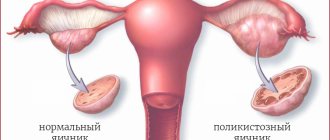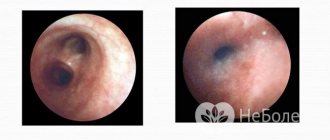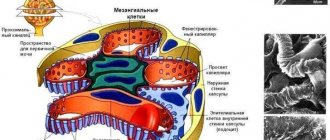Average reading time: 5 minutes
Suddenly feeling out of sorts? Have you noticed signs of irritability before your period? Do you sometimes have a headache or swollen mammary glands? Don't worry. Millions of women experience similar symptoms of premenstrual syndrome (PMS). Following simple practical rules aimed at getting rid of these symptoms can work wonders, and you will not have to give up your favorite activities due to PMS, even on “these” days!
Signs of PMS
According to medical statistics, general premenstrual signs number about 150 types, and they can have various combinations. For convenience, symptoms before menstruation were divided into groups. The first of them is neuropsychic. It reflects the emotional state and leads to changes in behavior. Here are the signs of menstruation that are approaching, characteristic of this form:
- depressed mood;
- aggressive attitude;
- irritability towards others;
- a sharp change from aggression to tearfulness;
- increased body temperature;
- drowsiness, general weakness.
The second form is edematous, with such unpleasant symptoms as:
- breast tenderness;
- swelling of the mammary glands;
- swelling of the legs, arms and even the face;
- increased sweating;
- increased sensitivity to odors.
The third form of PMS is called cephalgic. It is expressed in the following symptoms:
- sensitivity of the eyeballs, sensation of pulsation in them;
- headache, dizziness;
- feeling of nausea with possible vomiting.
The last form of PMS manifests itself in adrenaline crises, which is why it is called crisis. It is provoked by additional stressful experiences, infection and overwork. The most severe PMS has the following symptoms:
- blood pressure surges;
- squeezing sensations under the breast;
- cardiopalmus;
- frightened state, fear of dying;
- chills in the limbs, a feeling of numbness in the arms and legs;
- fainting;
- frequent urination.
Many people mistakenly believe that these two conditions - pregnancy and premenstrual syndrome - have one single similar symptom, and that is increased irritation. However, this is not quite true. Having understood these completely opposite, but at the same time so similar states, we can identify several identical signs.
Changing food preferences
Quite often, during an existing and progressing pregnancy, a woman wants to eat something special - something that she did not like before. Sometimes ladies cannot stand the smell of fish throughout their adult lives, and during pregnancy they are ready to eat fish dishes every day. Many people gobble up kilos of chocolate and marmalade, and devour pastries and pies. Or vice versa, they eat pickles and foods containing a large amount of spices.
Likewise, during the onset of premenstrual syndrome, girls’ appetite increases - and they strive to eat something special.
However, early toxicosis during pregnancy usually begins after a delay in menstruation, while PMS manifests itself much earlier. Therefore, this sign cannot be called an exact symptom of pregnancy.
Increased fatigue
A few more signs that occur both in the very early stages of pregnancy and before the onset of menstruation are severe fatigue, drowsiness, and fatigue.
During pregnancy, the amount of progesterone increases significantly, which, in turn, provokes a decrease in blood sugar, as well as a decrease in blood pressure. All this has quite a strong impact on the female body and exhausts it. A woman constantly feels the desire to lie down and rest.
When PMS begins, the amount of progesterone in the blood is quite high, which absolutely also causes a feeling of fatigue, weakness and a desire to sleep.
This sign also does not indicate the exact occurrence of pregnancy.
Breast soreness
Before the arrival of menstruation, women's breasts slightly increase in size and become more sensitive. And during pregnancy the same thing happens.
Attentive girls note that breasts behave differently. During pregnancy, the feeling of fullness of the mammary glands persists throughout the entire period of gestation, while in premenstrual syndrome the breasts swell for several days and return to their normal, habitual state before menstruation.
Feelings in the lower abdomen
When pregnancy occurs, a woman may feel some tingling in the lower abdomen. This occurs when the fertilized egg is “buried” in the muscular wall of the uterus.
And before menstruation, some women feel quite noticeable pain, but this does not mean that conception has occurred.
Sometimes during premenstrual syndrome, girls experience heaviness and pain in the lumbar region. This is what progesterone does. Pregnant women feel similar pains already when their center of gravity shifts due to the growing belly.
Frequent mood changes
Pregnant women are quite susceptible to sudden mood swings and lability of psycho-emotional state. This occurs due to high levels of certain hormones.
During premenstrual syndrome, women are more likely to experience negative experiences and irritation.
There is a certain group of women and girls who are susceptible to PMS much more than their other friends and relatives.
Why does PMS occur?
Unfortunately, modern medicine does not have an exact answer to the question of why premenstrual syndrome occurs. There are many different theories explaining the development of this disorder:
- violation of the water-salt balance, which leads to “water intoxication”;
- allergic reaction of the body to endogenous progesterone;
- psychosomatic nature.
The most plausible and most likely is the hormonal theory of the origin of PMS, which states that PMS is a consequence of hormonal surges in the 2nd phase of the menstrual cycle. The correct combination of hormones ensures the normal functioning of the female body:
- estrogens improve well-being, activate brain activity and increase vitality;
- excess progesterone has a sedative effect, which leads to depression in the 2nd phase of the cycle;
- Androgens can influence sexual desire, increase productivity and energy.
After ovulation, with the beginning of the second phase of the menstrual cycle, a woman’s hormonal balance completely changes; the body can react to such changes in different ways. Cases have been recorded in which PMS was passed on to the next generation.
Due to endocrine instability of the premenstrual period, somatic and psycho-vegetative changes occur in the body. They are caused by hormonal “swings” throughout the entire cycle and the reaction of the visceral brain to them:
- As estrogen increases, progesterone levels first increase and then decrease. Because of this, swelling appears, the mammary glands hurt, the functioning of the cardiovascular system is disrupted, blood pressure jumps, the woman becomes aggressive and irritable;
- with an increase in prolactin production, more fluid is retained in the body;
- with an increase in the level of prostaglandins, vegetative-vascular disorders, problems with the digestive system and headaches may appear.
All causes of PMS come down to hormonal imbalance, but the reasons for its manifestation may lie in the following factors:
- a drop in serotonin, which causes mental symptoms of PMS: melancholy, depression, tearfulness;
- low levels of vitamin B6 contribute to the accumulation of fluid in the body, increase the sensitivity of the mammary glands, and contribute to sudden mood swings;
- magnesium deficiency can cause tachycardia, dizziness, headaches and a desire to eat sweets;
- tobacco – women who smoke are 2 times more likely to suffer from PMS symptoms;
- problems with excess weight - women with a body mass index exceeding 30 units are more likely to experience the effects of PMS;
- PMS can be inherited;
- complicated childbirth, abortion, miscarriages, gynecological operations;
- stressful situations.
When does PMS appear and how long does it last in girls?
On average, premenstrual syndrome begins to manifest itself a week before the next menstruation. But there are cases when this time period can increase to 14 days. Sometimes PMS appears one or two days before the start of a new cycle.
PMS in girls, accordingly, can last from one day to two weeks. Of course, there are lucky women who do not experience premenstrual syndrome at all, but there are very few such representatives of the fairer sex.
Even if your PMS began a week before menstruation or even ten days, it is not at all necessary that its syndromes will manifest themselves throughout this period. Just a couple of days before your period, aggression, apathy, anxiety and other “charms” of PMS may stop. At the same time, of course, there are also frequent cases when the syndrome lasts until menstruation.
Decoding and definition
Many girls know firsthand about the unpleasant symptoms before menstruation. Probably every woman experienced psycho-emotional disorders and discomfort these days at least once in her life.
How does PMS stand for? - this is premenstrual syndrome (cyclic syndrome, premenstrual illness, premenstrual stress syndrome.) This is a complex set of symptoms that occurs cyclically in women a few days before menstruation.
- psycho-emotional;
- metabolic-endocrine;
- vegetative-vascular.
These disorders negatively affect a woman’s lifestyle.
The abbreviation stands for “premenstrual syndrome.” It is also called cyclic syndrome or premenstrual tension syndrome. PMS is characterized by a whole set of physical and emotional changes in the female body.
The first symptoms may appear 3-8 days before the start of menstruation, but in some girls and women they appear even earlier. All these changes, signaling the imminent onset of menstruation, cause changes in hormonal levels and the manifestation of an imbalance of microelements, which is reflected in a bad mood and physical discomfort.
But not all women experience PMS symptoms. Age also plays a role in this regard. Most often, representatives of the fair sex aged 20−33 face problems with premenstrual syndrome. With age, symptoms may no longer bother you, and during the late reproductive period, rare symptoms may occur in only half of the women.
From numerous observations, it has been proven that girls who are underweight and associated with intellectual work are often exposed to manifestations of cyclic syndrome. It has also been noted that the majority of women with characteristic signs of PMS belong to the Caucasian race. Symptoms rarely occur in young girls who have just started menstruating.
Sometimes PMS is deciphered as postmenstrual syndrome, which manifests itself after the end of the menstrual period. Many experts associate it with tension, which appeared and increased during menstruation.
How to distinguish PMS from other diseases
PMS symptoms are often confused with signs of pregnancy, but if you understand the nuances, the two conditions are easily separated. The first thing the girl pays attention to is “I started eating a lot.” Then the immediate conclusion is “pregnant,” but increased appetite and changes in taste preferences are characteristic of both pregnancy and PMS.
There are other factors that make it possible to separate the signs of PMS before menstruation from pregnancy:
- Backache. It occurs more often later in pregnancy. If you don’t yet have a decent tummy, this is a symptom of PMS.
- Emotional condition. Pregnancy causes mood swings, i.e. it can be bad and then improve dramatically. Premenstrual syndrome only causes depression and depression.
- Lower abdominal pain. During pregnancy, it is unobtrusive and short-term, but during PMS it is stronger and can last one day or throughout the entire menstruation.
- Menstrual cycle. If you celebrate it regularly, you will be able to determine the next onset of your period. A delay of one or two days is allowed and does not indicate pregnancy.
- Discharge. If blood is released long before the onset of menstruation and in scanty quantities, this indicates a possible pregnancy. The egg burrows into the body of the uterus, which causes the appearance of several pinkish drops of blood.
- Basal temperature. During ovulation it increases. What basal temperature should be before menstruation? It drops from 37.1 to 36.7°C. If the temperature does not decrease, this may indicate pregnancy or inflammation of the cervix.
- Already with a delay, due to the production of progesterone, thick discharge may appear, over time it becomes watery - a characteristic symptom of pregnancy.
- A pregnancy test is the most effective method. Buy it at the pharmacy and, following the instructions, do the test to know the result with accuracy.
The answer lies in the decoding of the abbreviation PMS (premenstrual syndrome). We are talking about the period that precedes the onset of menstruation (menstruation). Following PMS, the menstruation itself begins, during which the woman may also experience some discomfort, but at the same time there is a weakening of the main symptoms of PMS, or their complete disappearance.
Signs of the syndrome tend to appear several days before regulation, sometimes a week or more. If a woman keeps an individual calendar, marking her critical days and the ovulatory phase, she knows for sure when PMS should manifest itself. This is explained by the cyclical occurrence of premenstrual illness.
The presence of the syndrome is determined by the presence of 5 signs from the list:
- sleep problems;
- absent-mindedness, forgetfulness, loss of concentration;
- changes in appetite;
- feeling of weakness, increased fatigue;
- pain in the chest area;
- migraine;
- the appearance of edema;
- muscle or joint pain;
- relapses of chronic diseases.
The presence of PMS is indicated by the occurrence during the period on the eve of the regulation of at least one of the symptoms listed below:
- increased nervousness, aggression, desire to argue and enter into conflicts;
- increased sensitivity in the form of tearfulness;
- sudden changes in mood;
- anxiety, nervous tension and susceptibility to fears;
- depression.
The main sign that the symptoms indicate premenstrual syndrome and not another pathological condition is its cyclical nature. If PMS symptoms do not go away after your period, this is a cause for concern. You should visit a doctor and get examined.
With the onset of regulation, symptoms of a psychovegetative nature disappear, and physical manifestations can turn into symptoms inherent in menstruation.
If the manifestations of PMS and menstrual periods are severe and painful, and in the middle of the cycle bloody vaginal discharge is observed, a gynecological pathology such as endometritis or endometriosis can be suspected.
If PMS is severe, a woman should see a doctor. A hormone test and a number of studies are required:
- when complaining of migraine, lightheadedness, noise in the head, the woman is prescribed an MRI to exclude pathologies in the brain;
- if neuropsychiatric symptoms predominate, an EEG is required to determine whether the patient suffers from epilepsy;
- in case of severe swelling, kidney samples are analyzed to diagnose the condition of the organ;
- If you complain of tenderness and swelling of the mammary glands, mammography is required.
In addition to consulting a gynecologist, you will need to be examined by a neurologist, psychiatrist, nephrologist, endocrinologist, cardiologist, and therapist.
Causes
And yet, why does this syndrome arise, which is why so many representatives of the fair sex suffer, but not all.
This happens because a woman's hormonal levels are unstable during the menstrual cycle. Estrogens and progesterones can have different levels, which is why such symptoms appear. This is also due to the following factors:
- weak physical activity, constant body fatigue;
- hyperactive behavior;
- weight problems – excess or underweight;
- frequent stressful situations;
- abortions;
- involuntary termination of pregnancy;
- problems with pregnancy;
- pregnancies occur too often;
- irregular sex;
- gynecological diseases. Quite often they can be without any manifestations, so all women need to be examined by a specialist at least once a year to protect their health. If there are any deviations, immediately take measures to treat them;
- taking contraceptives;
- diseases of the endocrine system;
- excessive consumption of sweets;
- head injuries;
- insufficient amount of vitamin in the body;
- drinking alcohol, smoking. Scientists have established the fact that smoking may well disrupt hormonal levels, since smoking causes blood vessels to narrow.
Those women who live far from the city or in the village suffer much less from PMS. And those who live in hard-to-reach places, for example, Africa, Asia, do not know about this syndrome at all. This is facilitated by the stability of hormonal levels.
What will the doctor do?
Advice from a gynecologist
Doctors advise girls suffering from PMS to increase physical activity by starting to work out in the gym or signing up for yoga. However, you can also opt for running, cycling and much more.
If you are overweight, then it is better to reduce it. In the case of missing weight, it must be gained. In addition, do not overindulge in sweets - candies, cakes, pastries, carbonated drinks, and so on. Note that PMS can be especially pronounced in women who take birth control pills.
Get rid of bad habits, if any. Quitting light alcoholic drinks and smoking often significantly reduces PMS symptoms, or even gets rid of them altogether.
Perhaps one of the most important tips is to find out if you have endocrine or infectious diseases. If you still have them, then, of course, you should get rid of them.
Please note that PMS is directly related to the cyclical fluctuations of female hormones, and this is what should be eliminated. If there are no contraindications, doctors recommend taking oral contraceptives. By choosing the right dosage of medications, you can avoid sharp fluctuations in hormones. Of course, drug treatment should be started only after consultation with a doctor.
Psychologist's advice
Surely, you understand that your emotional state can affect the balance of hormones in the body, and for this reason, stress significantly increases the unpleasant symptoms of PMS. It is important to eliminate signs of nervous tension, and herbal teas, relaxation, and breathing exercises can help you with this.
To diagnose PMS or PMDD, a doctor must rule out the possibility of pregnancy or health problems. So be prepared to get tested and answer questions about when your symptoms started and how severe they were, how you know to feel better, your mood, and more. A menstrual diary will help you here.
If PMS is diagnosed and causes you severe discomfort, your doctor will most likely prescribe you the following medications:
- Diuretics. They are taken if exercise and limiting salt intake do not help cope with weight gain, swelling and bloating. Diuretic tablets remove excess fluid through the kidneys.
- Non-steroidal anti-inflammatory drugs. For example, ibuprofen or naproxen. As a rule, they are prescribed for cramps, headaches and discomfort in the pelvic and chest areas.
- Antidepressants. They increase the level of neurotransmitters produced by the brain, which are necessary to control mood and emotions. The most effective group is selective serotonin reuptake inhibitors.
- Hormonal contraceptives. These medications stop ovulation and may relieve PMS symptoms.
Ask your doctor about all possible types of therapy. For example, some women experience relief after acupuncture and herbal treatments (St. John's wort, ginger, ginkgo, chasteberry). Folic acid, magnesium, calcium, vitamins D, E and B6 help some. However, the effectiveness of these methods has not been proven.
And yes, always consult your doctor before taking any medications.
It is surprising that with the high level of development of medicine, premenstrual syndrome remains poorly understood. Women who do not suffer from it are considered lucky. What should the rest of us do when every month the whole world seems to collapse? There are several ways to avoid the unpleasant syndrome and reduce symptoms. By following a few simple tips, you can easily fight PMS.
Having studied the symptoms of PMS and the interpretation for each specific case, the doctor will prescribe the correct treatment. The following drugs are effective in reducing the symptoms of the syndrome:
- Magnelis B6. The main component is magnesium lactate. The drug reduces irritability during PMS, acting as a sedative. In addition, it restores sleep, relieves chills and muscle pain. Upon consultation with a doctor, take 6 to 8 tablets per day with food. Price from 200 rub.
- Mastodinon. Homeopathic remedy for menstrual irregularities, mastopathy and PMS. Take 1 tablet up to 2 times a day. The course of treatment should be more than 3 months. Price 480 rub.
- Cyclodinone. The main ingredient is extract of the fruits of common twig. It has a hormonal normalizing effect. Effective for PMS and menstrual irregularities. Take 1 tablet in the morning for 3 months. Price from 400 rub.
Premenstrual syndrome is relieved by following a diet. The following products should be avoided:
- confectionery products in the form of sweets, cakes, sweet drinks;
- sugar;
- caffeine;
- alcoholic drinks;
- chips.
You need to limit foods that contain protein:
- nuts;
- meat;
- legumes;
- fish;
- dairy;
- chicken eggs.
It is recommended to consume products from the following list:
- pasta;
- whole wheat bread;
- vegetables;
- rice;
- potato;
- fruits.
CMS according to PMS. Or what is premenstrual syndrome and how to cope with its manifestations
“During PMS you want to do only 2 things - kill and cry, cry and kill. Kill everyone who makes you cry, and then cry because you killed everyone around you."
It’s impossible to count how many anecdotes and jokes there are about the condition of women in “these days.”
Agree, after all, each of us, at least once in our lives, found ourselves in tears of tenderness from seeing a cat, dog, and baby doll. Or in anger and rage because I really wanted a dessert of bacon, cherries and ice cream, but no one had yet invented this dish.
Or everything is annoying. It’s annoying that my husband snores like an elephant, and even if he doesn’t snore, he snores disgustingly, the sound of the phone is annoying, the diamonds in his ears are annoying. Everything infuriates me, but I want to be in my arms, but my head hurts.
But seriously, many girls and women have no time for jokes on days like these.
It’s difficult for men to understand. But premenstrual tension syndrome, for a moment, is included in the WHO classification. This means that the world medical community recognizes our condition.
What is PMS? Normal or pathological?
Premenstrual tension syndrome is a specific condition that precedes menstruation and is manifested by the following symptoms:
- depression, anxiety, headaches, tension, irritability, tearfulness
- drowsiness or insomnia
- change in appetite, nausea, dizziness
- bloating, constipation, or diarrhea
- decreased concentration and memory - weakness, fatigue
- increased sensitivity or pain in the mammary glands, swelling of the face, arms, legs, weight gain
For some women, these symptoms pass quietly and unnoticed, while for others they occur very violently. But the time of appearance is always predictable - from 21 to 28 days of the menstrual cycle, i.e. a week before menstruation. This allows you to distinguish PMS from other conditions and diseases. With the onset of menstruation, all symptoms quickly disappear.
If PMS symptoms are mild, this is normal and does not require treatment. If the symptoms are pronounced and reduce a woman’s quality of life, then they should be corrected. And this must be done, of course, with the help of a doctor.
In the period before menstruation, physiological hormonal fluctuations occur. They can be of varying degrees of severity. For example, when estrogen and progesterone levels are insufficient, aldosterone levels increase. It, in turn, causes fluid retention in the body, swelling, headaches and increased blood pressure. Progesterone causes relaxation of the smooth muscles of the intestines, so constipation and bloating may occur.
The level of monoamine oxidase (a substance released in brain tissue that can cause depression) increases. While the level of serotonin (the hormone of joy) decreases, and this leads to migraines, anxiety, depression, and dizziness.
Previously, it was believed that PMS occurs due to hormonal imbalance, but today it has been proven that this syndrome occurs during a normal ovulatory cycle. Everything that happens to us during this period reflects the normality of hormonal changes and the two-phase cycle.
And this is what happens: in the middle of the menstrual cycle, an egg is released from a mature follicle in the ovary - ovulation. During this period there is a peak in estrogen synthesis. Then, in place of the burst follicle, a corpus luteum is formed - a formation with high hormonal activity that synthesizes progesterone.
In order for ovulation to occur, the pituitary gland (a brain structure) releases peaks of FSH and LH. And the parts of the brain responsible for emotions, vascular reactions, and regulation of metabolism react to such endocrine “bursts.”
With PMS, the relative content of estrogen increases with a relative decrease in progesterone levels. Estrogens activate the renin-angiotensin-aldosterone system, causing sodium and fluid retention in the body. This leads to swelling, headaches, and chest pain. The level of potassium and glucose in the blood also decreases, which causes weakness, heart pain, and decreased activity.
The development of PMS is facilitated by a lack of vitamins, magnesium and unsaturated fatty acids in food.
The severity and intensity of PMS is determined by the general hormonal background, the level of stress, fatigue and tension, therefore PMS can manifest itself differently at different periods of life.
What to do if the symptoms are severe and reduce the quality of life “these days”?
What can you do:
- Sport. Regular exercise has been proven to reduce the severity of PMS symptoms. This is due to the release of endorphins, which relieve stress and improve your mood.
- Sleep and relaxation. Sleep at least 8 hours. Sleep plays an important role in the production of melatonin, the regulation of serotonin, dopamine and growth hormone, which affect mood, motivation, appetite, and weight.
- Diet. Eat a diet high in fiber. Protein must be present (seafood, fish, eggs, turkey) to maintain the level of tryptophan - an amino acid that helps the production of serotonin - the hormone of happiness and joy.
- Eliminate light carbohydrates (sweets, buns, pastries, cakes), which lead to surges in glucose levels. They should be replaced with complex ones (cereals, vegetables). Avoid spicy and salty foods.
- Maintain constant blood insulin levels. To do this, eat little, but more often, 4-6 times a day.
What the doctor can do:
- Examination. In severe forms of PMS, when symptoms disrupt the normal course of life, reduce performance and lead to depression, a blood test for hormones, an ultrasound of the pelvic organs, and a study of the level of vitamins and microelements will be required.
- Treatment focuses on reducing symptoms. Natural phytoestrogens (Agnus castus, Vitex), B vitamins, magnesium, and natural sedatives are effective in eliminating or reducing symptoms.
Painful sensations
One of the main signs of premenstrual syndrome is an unpleasant painful sensation. A girl may complain of headaches, discomfort in the lower abdomen and lower back, as well as enlargement and sensitivity of the mammary glands.
Sometimes such pain goes unnoticed and causes the woman only slight discomfort. In some cases, the sensations can be so strong that the woman requires medical attention and painkillers.
Mental condition
What does “PMS in girls” mean? Surely every man will answer that this means a nervous state and irritability.
Indeed, premenstrual syndrome is characterized by increased nervous excitability and irritability. During this period, girls often change their mood, they become whiny and nervous.
It is worth noting that such a female condition causes inconvenience not only to the fairer sex herself, but also to all members of her family. In some cases, irritation can become so strong that a woman simply cannot calmly communicate with people and lead her usual lifestyle.
When does PMS appear and how long does it last in girls?
Since PMS is a phenomenon that occurs shortly before menstruation, it can be diagnosed in a girl already from her first menstruation. Although, of course, each organism is individual, and if you did not observe any signs of this syndrome in your early youth, then it is quite possible that they will appear in adulthood. However, it is worth noting that most often women between the ages of 20 and 40 experience concern about this.
The onset of PMS varies individually for each woman. Mostly its symptoms begin to appear 2-3 days before the menstruation period begins. However, it is worth noting that some girls are much less “lucky” - they begin to feel irritability, anger and other symptoms much earlier - about a week or even ten days before their period arrives. However, the number of days may vary each time.
PMS course
PMS affects women differently. For some, symptoms appear at the same time and go away with the onset of regulation. In more severe cases, the patient’s condition can only worsen over the years, and the number of symptoms constantly increases with each cycle. In severe cases, the symptoms of PMS do not go away with the onset of critical days, but persist even after their completion; over time, the period without premenstrual symptoms is significantly reduced.
Women with mild PMS may experience mild discomfort, which does not have a negative impact on quality of life. A severe degree of the syndrome affects personal life, leads to loss of ability to work, and in some situations requires the issuance of a certificate of incapacity for work.
How to avoid PMS without taking medications
Many ladies who suffer greatly from PMS are looking for ways to combat it. Methods can be either medicinal or traditional.
Try to spend more time outdoors. Rest and healthy sleep are also important. Try to sleep at least eight hours a night. This will help the body relax and relieve you of increased nervous excitability and headaches.
Eat right. Eat vegetables and seasonal fruits. Before your period, try to avoid fatty and spicy foods. This will help avoid abdominal discomfort and improve digestion.
If there is such an opportunity, then during PMS you should take a few days off and put off important things. Give up important negotiations and deals. Set them aside for a few days.
If you experience severe pain in the lower abdomen, stay in bed. You can take a heating pad with you to bed and place it on your lower abdominal area. Heat will help relieve the spasm and ease your condition.
How to escape?
Almost all women want to find a way that will help get rid of the symptoms of the much-hated PMS. In order to stop suffering from symptoms, you need to eradicate the causes of their appearance, namely, start intense physical exercise, adjust your diet, have regular sexual intercourse - this is the most pleasant treatment.
It is also worth thinking about another method of contraception, quit smoking and reduce the amount of alcohol consumed, spend more time in the fresh air, preferably outside the city, where you can breathe easily and freely. Bring your weight back to normal, do not overuse sweets, and in the case of the edematous form of the syndrome, you should exclude salt and all pickles from your daily diet, as they, on the contrary, contribute to their formation.
It is necessary to eat often, but in small portions, as with a healthy diet. All this will help prevent the onset of symptoms, but if these methods are not effective, then you should consult a doctor. He will be able to advise you how to behave in this situation. There are several treatment options:
- take hormonal medications 15 days before the start of menstruation;
- taking a vitamin complex;
- take products that have a calming effect, and lemon balm and mint tea are also suitable, they relax without any harm to the body;
- take water treatments, go for massage, physiotherapy, swim in the pool;
- Doing yoga or aerobics is not only useful in preventing PMS, but also has a beneficial effect on the condition of the entire body as a whole.
You need to choose treatment carefully, because the female body is so diverse that it is impossible to guess how it will react to a certain treatment. Under no circumstances should you try to solve this problem without the advice of a qualified specialist - you can make it even worse.
Each woman is very individual, and what may help one may be completely useless for another. Therefore, you should not share your experience with your friends, because it is best to get rid of such a thing as PMS once and for all.
Conservative therapy
When visiting a doctor, a woman receives referrals for tests. She will have to donate blood to determine hormone levels and undergo an ultrasound examination. After this, the specialist may prescribe treatment for premenstrual syndrome.
In most cases, hormonal drugs are prescribed. If a girl is not planning a pregnancy, then these will be oral contraceptives: “Zhanine”, “Logest”, “Novinet” and others. If a woman wants to have a child, treatment of premenstrual syndrome can be carried out with the drug Duphaston or Utrozhestan suppositories.
What to do to treat premenstrual syndrome
Proper nutrition, a calm lifestyle, the absence of stressful situations along with increased physical activity usually help women alleviate the symptoms of PMS.
Patients should limit:
- drinking drinks containing caffeine. They contribute to increased emotional instability, cause insomnia, gastrointestinal disorders;
- salt consumption. It promotes the formation of edema and weight gain;
- sweets, including chocolate. Nutritionists believe that excess sugar combined with caffeine can destroy B vitamins in the body;
- alcohol consumption. Alcoholic drinks increase anxiety, irritability, and cause headaches.
The doctor decides what to do to treat premenstrual syndrome. Drug therapy is prescribed after assessing the presence and intensity of somatic and psychological symptoms and making a diagnosis. In some cases, calcium and vitamin D supplements are indicated. Anti-inflammatory drugs will help relieve pain. For severe PMS, your doctor may prescribe birth control and/or diuretics.
Related services: Gynecological Check-up Colposcopy
How to tell if you have PMS
Mood swings
One of the first signs of the onset of PMS is sudden mood swings. In such cases, a woman may suddenly feel anxious and depressed against the background of general well-being. She can also be thrown off balance and brought to an aggressive state by some completely insignificant troubles, to which at other times she most likely would not have paid much attention.
Physiological changes in the body
The onset of PMS is most often characterized by changes not only in the psychological state of a woman, but also by some physiological changes.
Let's take a closer look at some forms of the syndrome
- In this case, headaches are predominant, in which total blood pressure may not be outside the normal range. You may also experience numbness in the hands, sweating, and tingling pain in the heart.
- There is also an edematous form of PMS, which mainly affects young girls. The main symptoms of this form are swollen breasts, when touched, the girl feels quite painful. In addition, swelling of the feet, hands and face may occur. Increased sweating and pain in the lower abdomen are possible.
- This form is characterized by high blood pressure, pressing pain in the chest area, and rapid heartbeat. There is also very high anxiety. Symptoms usually appear at night, when the autonomic nervous system is particularly active. Women suffering from this form of PMS may periodically feel body tremors throughout the night during this period. As a rule, in the morning the described symptoms stop.
Diagnosing PMS is difficult. Physical and mental illnesses can have similar symptoms or simply make things worse before your period. Therefore, the most effective diagnostic method is keeping a diary.
Note the following every day:
- Are there any pains or cramps?
- Is there any vaginal discharge?
- What's your mood?
- How long did you sleep?
- Do you feel tired or energized?
- How much do you weigh?
- Are there any external changes (bloating, acne)?
- Was there any physical activity?
- Was there sex? Protected or not?
- Are you taking contraceptives?
- When did your period start and end?
The most convenient way to do this is in special applications. Your smartphone is always with you, so you can make a note at any time.
Forms, degrees, stages
Cyclic syndrome can manifest itself in several forms:
- neuropsychic. This form is characterized by a large number of emotional symptoms;
- cephalgic. With this form, severe and prolonged migraines are expressed;
- edematous. With the edematous form, disturbances occur in the water-salt balance, which cause the accumulation of fluids in the tissues. PMS can cause frequent thirst or increased blood pressure;
- crisis. It is the most severe form of PMS. In this form, severe pressure surges and loss of performance occur during this premenstrual stage.
Premenstrual tension syndrome, or, as it is more commonly called, PMS, has a very broad classification. According to the severity of symptoms, the disorder has the following forms:
- edematous – it is characterized by swelling of the legs and face, as well as increased sweating;
- the neuropsychic form is characterized by sharp changes in the emotional background;
- cephalgic - the main symptom is severe pain in the head;
- crisis - accompanied by a sharp and strong jump in blood pressure;
- atypical – a characteristic symptom is increased body temperature and migraine;
- mixed – combines symptoms of various forms of the disorder.
According to the severity of PMS in girls, it can be severe or mild. In the first case, no more than 10 signs appear, 5 of which are the most pronounced. With a mild degree, a woman has no more than 5 signs, of which only 2 will be pronounced.
There are 3 stages of disease manifestation:
- Compensated. The signs are weak or do not appear at all, and disappear completely with the onset of menstruation.
- Subcompensated. The symptoms are pronounced and negatively affect performance. Intensifies with a woman's age.
- Decompensated. The symptoms are very intense, but with the onset of critical days they immediately disappear.
All forms and stages of PMS are treatable, but this requires a lot of effort and time.
- Compensated - symptoms stop with the onset of menstruation and do not progress with age.
- Subcompensated - symptoms stop when menstruation ends and progress with age.
- Decompensated - symptoms continue for several days after the end of menstruation.
The syndrome is divided into mild and severe degrees depending on the symptoms.
Mild degree - the presence of 3-4 symptoms, 1-2 of which predominate.
Severe degree - 5-10 symptoms immediately appear, 2-5 of which predominate.











